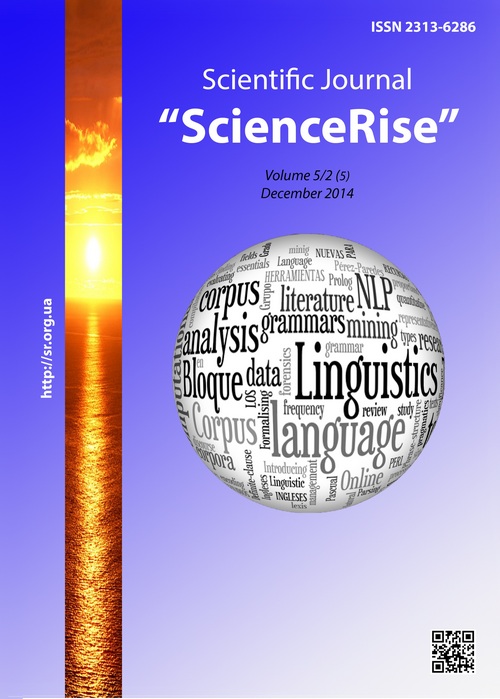The effect of physical-chemical and technological factors on the process of calcium oxide hydration hardening
DOI:
https://doi.org/10.15587/2313-8416.2014.31493Keywords:
kryohydration, hydration activity, potlandite stone, morphology of crystals, energy content of the system, peptization, contraction, vibroactivationAbstract
Some regularities of hydration activity of calcium oxide are considered in the article. The process of structure formation of calcium oxide under low temperature is investigated. The thermodynamic evaluation of the strength of portlandite stone by method of the energy reserve calculation is conducted. It is established, that during the quicklime hardening at limiting the volume, the morphology of the crystals Са(ОН)2 is changed. Hydration hardening of calcium oxide is also occurred in a vacuum.
References
Sanitsky, M. A. (1990). Some questions of the crystal chemistry of cement minerals. Kiev. UMK VO, 64.
Klein, D. H., Smith, M. D. (1968). Homogeneous nucleation of calcium hydroxide. Talanta, 15 (2), 229–231. doi: 10.1016/0039-9140(68)80227-9
Moschansky, N. A. (1956). Idea of the nature of mineral binders based on Mendeleev's periodic law and the doctrine of the metastable states. In book: Proceedings of the meeting on the chemistry of cement, 114–125.
Shpynova, L. G., Chih, V. I., Sanitsky, M. A. (1981). Physico-chemical basis of structure formation of cement stone. Lviv. Vyshcha shkola, 160.
Uman, N. I., Svatovskaya, L. B., Ovchinnikova, V. P. (1998). Hardening cement minerals at low temperatures. Cement and its Applications, 5(6), 26–28.
Zeilnhofer, J., Ploetz, C. (1998). Vollautomatische Kalk-Trockenloschanlage. Zement-Kalk-Gips, 51, 494–499.
Wolter, A., Luger, S., Schaefer, G. (2004). The kinetics of the hydration of quicklime. Cement Lime Gypsum, 8, 60–69.
Ramachandran, V. S., Sereda, P. J., Feldman, R. F. (1964). Mechanism of Hydration of Calcium Oxide. Nature, 201, 288–289. doi: 10.1038/201288a0
Yakymechko, Y. B., Voloshynech, V. A. (2012). The kinetic parameters of hydration of CaO in electrolyte solutions. Technology and design. Electronic issue, 1(2), 11. Available at: http://www.nbuv.gov.ua/e-journals/td/2012_1/2012-1.html
Galmarini, S., Aimable, A., Ruffray, N., Bowen, P. (2011). Changes in portlandite morphology with solvent composition: Atomistic simulations and experiment. Cement and Concrete Research, 41 (12), 1330–1338. doi: 10.1016/j.cemconres.2011.04.009
Lõhmus, H., Räni, A., Kallavus, U., Reiska, R. (2002). Trend to the Production of Calcium Hydroxide and Precipitated Calcium Carbonate with Defined Properties. The Canadian Journal of Chemical Engineering, 80 (5), 911–919. doi: 10.1002/cjce.5450800514
Osin, B. V., Volkov, V. V., Didelkul, A. S. (1972). Investigation of the processes of structure formation and destruction of lime-sand concrete curing stage hydration of lime. Izvestia vuzov. Construction and architecture, 1, 70–73.
Gyitur, V. I. (1991). Activator of cement. Building materials and constructions, 4, 34.
Downloads
Published
Issue
Section
License
Copyright (c) 2014 Ярослав Богданович Якимечко, Богдан Богданович Чеканський

This work is licensed under a Creative Commons Attribution 4.0 International License.
Our journal abides by the Creative Commons CC BY copyright rights and permissions for open access journals.
Authors, who are published in this journal, agree to the following conditions:
1. The authors reserve the right to authorship of the work and pass the first publication right of this work to the journal under the terms of a Creative Commons CC BY, which allows others to freely distribute the published research with the obligatory reference to the authors of the original work and the first publication of the work in this journal.
2. The authors have the right to conclude separate supplement agreements that relate to non-exclusive work distribution in the form in which it has been published by the journal (for example, to upload the work to the online storage of the journal or publish it as part of a monograph), provided that the reference to the first publication of the work in this journal is included.

